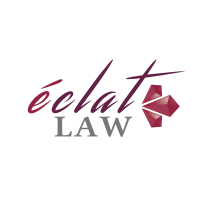Have you ever been on the “It’s a Small World” ride at Disney? It’s a cute ride, sure, but at 15 minutes long, the nonstop loop playing “iiiiit’s a small world aaaaafter all, iiiiit’s a small world aaaaafter all, iiiiit’s a small world aaaaafter all – it’s a smaaall wooorld aaafteeer aaaaall” will drive you absolutely insane. Now imagine being stuck in the middle of the ride for half an hour.
In 2011, California man Jose Martinez lived that very nightmare as Disney workers evacuated other passengers but left him behind because, as a paralyzed man, they didn’t have proper procedures in place to help him. In addition to violating the Americans with Disabilities Act, Martinez sued for negligence, liability, and emotional distress, winning $8,000.
With that kind of mild aural torture, I’d want to sue too.
If you’ve ever been so angry, frustrated, or upset by someone’s actions that it’s caused you significant emotional damage, you may have experienced Intentional Infliction of Emotional Distress. While frivolous lawsuits may give “emotional distress” a bad name in court, these cases are actually pretty serious, as the effects of the distress can last a lifetime. Keep reading to find out more about what this legal term means, what impact it could have on you, and how it is determined in court.
So, what is Intentional Infliction of Emotional Distress (IIED)?
Intentional Infliction of Emotional Distress, or IIED, is part of a body of law that provides remedies for individuals who have been wrongfully injured or harmed by another’s actions, known as tort law. This tort law allows you to seek damages for mental suffering caused by another person’s intentional or reckless conduct. It requires the defendant to have acted in a way that was extreme, outrageous, and intentional to cause severe emotional distress to the plaintiff.
IIED can be caused by physical harm, verbal abuse, or even behavior that is not directly related to the plaintiff. It is essentially any behavior that is considered “extreme and outrageous” that would cause the plaintiff to suffer severe emotional distress. Examples include things like:
- Intentionally causing a car accident to scare the victim
- Bullying or cyberbullying
- False imprisonment
- Harassment or stalking
- Trespassing on someone’s property
- Making false accusations against someone in public.
In 2022, éclat Law settled a case in Central Florida involving an IIED claim brought against the Osceola County Fire and Rescue Battalion Chief. During a residential fire call in 2016, the Chief, who had been acquainted with the plaintiffs for over twenty years, made distressing and derogatory remarks about the plaintiffs as their house was burning down, saying things like “let it burn, this will continue to burn until the morning” and “burn it to the ground.” Additionally, he prevented other fire department members from making any effort to put out the fire, saying “I don’t care what you do, just keep it contained to this structure and do not put it out.”
This resulted in damages to the plaintiffs’ lives that caused intense emotional suffering. The plaintiffs lost four beloved pets, including one emotional support animal, in addition to their home and belongings because of the Osceola Fire Chief’s cruelty. They rightfully sued and were awarded $300,000 in a settlement with the county. This case demonstrates that while direct physical harm may not be inflicted, a person can still be held liable for IIED if their conduct was extreme and outrageous.
The effects IIED has on victims
Intentional Infliction of Emotional Distress (IIED) is a form of psychological abuse that can have short- and long-term consequences for the victim’s mental health and well-being. The intensity of stress that people are exposed to while enduring IIED is both physically and psychologically harmful, causing things like:
- Physical pain, as well as physical and emotional exhaustion
- An increase in blood pressure and heart rate, leading to an increased risk of stroke or heart attack
- A weakened immune system, making a person more prone to illnesses and infections
- Headaches, nausea, and other medical issues that can decrease quality of life
- Difficulty sleeping, resulting in fatigue during the day and increased stress levels
- Gastrointestinal problems such as diarrhea or constipation due to stress-induced changes in digestion and metabolism
- An increase in substance abuse, such as alcohol consumption or the use of illegal drugs, used as a negative coping method
- Development of phobias related to the experience of IIED and avoidance of situations where further emotional distress may be experienced
- Low self-esteem due to feeling helpless or powerless in the face of continued abuse
- Anxiety and depression, leading to difficulty functioning in everyday life
- Post-traumatic stress disorder, which is a condition that causes severe mental distress when exposed to something emotionally or physically traumatic
- Suicidal thoughts or self-harming behavior due to feeling hopeless and helpless in the face of trauma or continued exposure to IIED.
Long-term effects are likely to vary depending on the severity and duration of the emotional damages experienced; however, it cannot be overstated how much this type of psychological abuse can impact one’s mental health and well-being in the long run.
Legal ramifications and considerations for cases involving IIED
In many areas, Intentional Infliction of Emotional Distress (IIED) is considered a civil cause of action. This means that it is a tort — a civil wrong not arising out of a contract or other agreement between parties — and the victim will usually seek damages from the wrongdoer. Depending on the jurisdiction, these damages may include compensation for psychological injuries such as physical pain, humiliation, anxiety, depression, suffering, and loss of enjoyment in life. Other potential remedies may include punitive damages to punish the wrongdoer and prevent similar behavior in the future. But suing for emotional distress is not easy — to prove IIED in court, there are specific elements that must be met, including establishing an intentional or reckless act by the perpetrator, causing severe emotional distress to the victim, and ensuring that there was no legal justification for the conduct. Thus, it is essential to seek legal advice early if you believe you have experienced IIED so that all relevant factors can be considered when seeking redress.
Extremely offensive and outrageously obscene
Now, we all have to deal with some uncomfortable situations in life, but what makes IIED stand out is the “extreme and outrageous” nature of the perpetrator’s actions. But what does this really mean? Generally, extreme and outrageous behavior is defined as conduct that goes beyond all bounds of decency — it’s regarded as atrocious and utterly intolerable in a civilized community. More than just insults, indignities, threats, annoyances, or trivialities, it’s behavior that is so unconscionable that it shocks society’s sense of decency. And what one person may deem extreme and outrageous, another may not — like seeing someone rubbing themselves in vomit on the New York subway train versus doing that at a public library in Vermont — which is why the behavior must be so unequivocally bad that everyone agrees it’s wrong.
Define distressful: determining the severity of distress
A key factor in IIED claims is determining whether the emotional distress was severe enough to cause physical, mental, or psychological harm. This is quite subjective since emotional distress can vary greatly depending on your individual experience, but courts will consider the duration of the distress, the evidence of emotional and physical harm, whether the distress was so extreme as to be considered beyond what a reasonable person would normally endure, and whether any mitigating factors existed. The distress must be more than temporary discomfort or embarrassment and must be ongoing and serious enough to interfere with everyday life functioning.
Practical solutions for limiting the occurrence of IIED in society
Educating the public about IIED and the potential long-term effect of emotional distress is an important way to reduce its occurrence. Raising awareness of what constitutes extreme and outrageous conduct can help people recognize when a line has been crossed and encourage them to refrain from engaging in such behavior. Taking steps to minimize power dynamics that can lead to harassment, abuse or exploitation is also a key to prevention. Providing mental health services, such as counseling and talk therapy, can help those affected by IIED cope with their emotions and find practical solutions for managing stressors in their lives. Establishing stronger laws against bullying and other forms of intentional infliction of emotional distress can act as another layer of protection against these incidents occurring in society. Finally, encouraging victims of IIED to seek legal advice and pursue civil remedies can help hold wrongdoers accountable for their actions. By taking these steps, society can work towards preventing the intentional infliction of emotional distress.
Intentional Infliction of Emotional Distress is a serious form of psychological and emotional abuse that can have far-reaching ramifications, both on its primary victims and within the broader society. By understanding its causes, recognizing what constitutes extreme and outrageous conduct, and taking steps to prevent it from occurring in the first place, we can help protect individuals from experiencing IIED. Unfortunately, some situations reach too far past any sort of regulation, so if you find yourself suffering from IIED, seek out professional help fast! We can help you recognize your rights and provide support as you go through this trying time. Contact Us Today!
eclat Law, PA
-
Bridget Lake Director of Marketing and Business Development
- March 23, 2023
- (407) 636-7004
- Send Email



